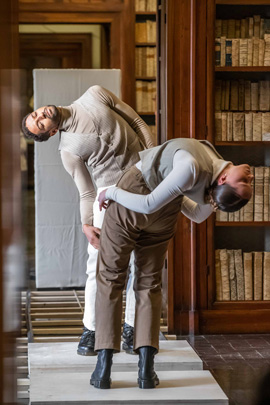Inaugurated on the occasion of the Notte d’oro 2017, it is the latest acquisition among the spaces of the Classense Library, after the restoration work of the rooms once occupied by the artistic high school, and before that, by the Academy of Fine Arts. This large room contains a floor mosaic, placed here at the end of the 19th century, when this space was part of the Art Gallery set up by the students of the Academy, then located on the ground floor of the Library. The mosaic consists of three panels with different decorations and was found in 1875 in the area of Classe, near the Basilica of Sant’Apollinare.
Archaeologists do not agree on this work: some claim that the panels come from a Roman house in the area, dating back to before the construction of the early Christian churches in the 5th-6th centuries. The most probable theory, however, traces the floor back to the basilica dedicated to Probus, and in particular to the renovation by the archbishop Maximian, as witnessed by the historian Agnello. On that occasion Maximian had the relics of the blessed Probus, from whom the building also derives its name, brought here. The basilica must have played an important role as it is mentioned by many Ravenna historians even in ancient times: it is perhaps the oldest cathedral in Ravenna, where solemn religious festivities were celebrated.
After the discovery, the mosaics were recomposed in this room between 1889 and 1890 by workers under the direction of Gaetano Savini (1850-1917), a painter, decorator, and teacher at the Academy of Fine Arts. The largest panel depicts a vase from which vine shoots emerge: there is a peacock above; the image is placed inside an octagon, which is in turn contained within a larger octagon and decorated with geometric and plant elements and framed by a braided ribbon.
The mosaic can be traced back to masters of oriental origin, given the refinement of the style and the use of symbols that were very common in Africa and the East; overall, it is the most elegant floor mosaic found in the Ravenna area. The symbols refer to the religious themes of Christ (vine), resurrection and eternal life (peacock), confirming the idea that this floor was originally intended for a sacred place. The other two mosaic panels show a simpler decoration, with geometric figures within interlaced ribbons and ornaments: together with the first panel, they form a mosaic floor of about 90 square metres.

